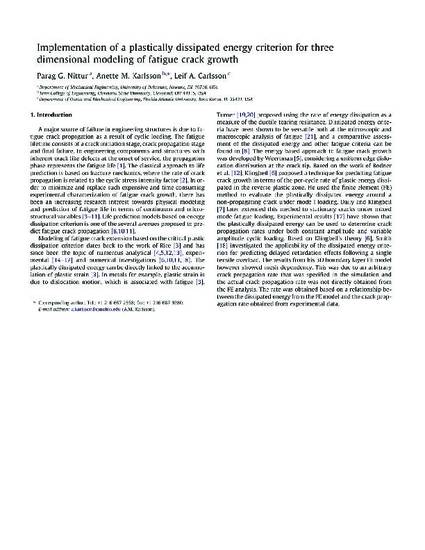Publication Date
9-1-2013
Abstract
Fatigue crack growth is simulated using three dimensional elastic-plastic finite element analysis. The crack extension per load cycle, da/dN, as well as crack front profile changes (crack tunneling) under cyclic loading is not specified as an input but evaluated based on a condition that relates plastically dissipated energy to a critical value. Simulation of cyclic crack propagation in a middle-crack tension M(T) specimen using this implementation captures the well established, experimentally obtained crack growth rate reduction accompanying a single overload event. The analysis predicts that the single overload also affects the crack front profile, where a tunneling crack propagates with a flatter crack front in the overload affected zone.
DOI
10.1016/j.ijfatigue.2013.04.011
Publisher's Statement
NOTICE: this is the author’s version of a work that was accepted for publication in International Journal of Fatigue. Changes resulting from the publishing process, such as peer review, editing, corrections, structural formatting, and other quality control mechanisms may not be reflected in this document. Changes may have been made to this work since it was submitted for publication. A definitive version was subsequently published in International Journal of Fatigue, 54, , (09-01-2013); 10.1016/j.ijfatigue.2013.04.011
Citation Information
Nittur, P. G., Karlsson, A. M., and Carlsson, L. A., 2013, "Implementation of a Plastically Dissipated Energy Criterion for Three Dimensional Modeling of Fatigue Crack Growth," International Journal of Fatigue, 54pp. 47-55.

